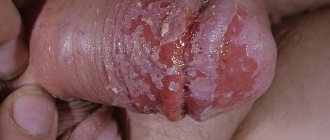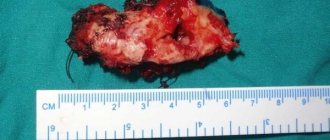After surgery, oral care requires special care and attention. The hardest part of the treatment is over, but for some time you still need to follow a number of rules that will protect your teeth and gums from new inflammations.
- After tooth extraction
- After frenuloplasty
- After implantation
Most often, special postoperative care is required during the postoperative period when installing dental implants. We will talk about it in more detail later, but for now we will list other, rarer, but also important cases when your teeth and gums require special care.
What is frenulotomy?
Frenulotomy is a simple operation, indicated for such a feature as a short frenulum of the genital organ. During this operation, the frenulum is transversely dissected and then sutured in the longitudinal direction. Thus, it stretches to its normal length. As a result, only a thin seam is visible from the inner surface of the foreskin, everything looks quite natural. The entire operation lasts no more than 20 minutes, it is not a complex surgical procedure, and is performed under local anesthesia.
Correction of the frenulum allows you to eliminate pain symptoms and eliminate the risk of ruptures and bleeding during erection. The procedure is quite simple, and the development of complications after it is extremely rare.
What problems can frenulotomy solve?
The frenulum is a fold of skin along the penis that connects the foreskin and the glans. During an erection, it stretches, exposing the head, bending it slightly in order to ensure its stimulation. Another of its functions is to prevent excessive displacement of the foreskin.
When the penis is in a relaxed state, it provides protection with the foreskin. The anatomical features of its structure are such that it contains many nerve endings, due to which it is very sensitive. In a normal state, during sexual intercourse it becomes tense, which increases arousal. However, in a shortened form, such physiological phenomena cause pain symptoms in a man and negatively affect the quality of his sexual life. Moreover: in some cases, ruptures and scarring of the folds, erectile dysfunction and the development of inflammatory processes are possible - balanitis.
According to statistics, about 30% of men have a short frenulum from birth. Despite the fact that this anomaly is not life-threatening, it can cause a lot of unpleasant moments. Unfortunately, it is not possible to detect this pathology at an early age. Young people learn about it after puberty and, as a rule, being secretive, do not immediately seek professional urological help.
At the same time, a solution to this problem exists, and it is quite simple. This is plastic surgery of the frenulum of the foreskin - an operation that will relieve:
- pain and risk of injury during sexual intercourse;
- the likelihood of severe bleeding due to rupture of the fold through which a large blood artery passes;
- formation of scars after ruptures and even greater shortening;
- early ejaculations;
- development of erectile dysfunction;
- inflammatory diseases of the foreskin and glans.
During the operation, the surgeon dissects the frenulum crosswise and stitches it lengthwise, thereby increasing its length. The operation becomes more complicated in the presence of scars after ruptures: it involves frenuloplasty, in which scar tissue is replaced.
Indications for frenulotomy
A short frenulum can be a congenital or acquired pathology that occurs as a result of trauma to the penis or inflammatory processes. Pathology provokes:
- drooping of the head of the penis, discomfort and even pain during erection;
- premature ejaculation;
- there is a constant huge risk of tearing or rupture of the frenulum, accompanied by heavy bleeding.
It is better to perform a frenulotomy of the foreskin before the frenulum ruptures. And rupture of the frenulum if it is not long enough is almost inevitable. As soon as a man begins to perform intense friction during intercourse or masturbation, he risks tearing or tearing the frenulum. And using additional lubricant will not help here.
Some male representatives mistakenly believe that a good solution would be careful behavior and avoidance of intense friction. Even if you try to control the situation and perform only slow frictions, on a subconscious level there will still be fear and expectation of severe pain due to a tear or rupture. Of course, in such conditions it is unlikely that you will be able to get full satisfaction from sex.
Indications for surgery:
- An erect penis bends in such a way that the head bends downwards.
- Retracting the skin fold is difficult, causing pain and a feeling of tightness.
- Painful frictions cause discomfort and interfere with normal sexual intercourse.
- Frequent frenulum tears and bleeding.
- Phimosis or paraphimosis.
- Early ejaculation.
Frenulotomy is a simple operation and is often performed on an outpatient basis. Local anesthesia is usually sufficient, but in some cases general anesthesia may be necessary. The procedure does not last long, about half an hour.
Before the operation, the patient takes all the necessary tests, including HIV tests, and undergoes an examination. After this, if there are no contraindications, he goes to the operating room.
Circumcision and removal (excision) of the frenulum
Surgical intervention to circumcise the frenulum of the foreskin is not considered mandatory if there are no alarming symptoms. But most experts advise carrying out this procedure as a preventive measure.
Carrying out the procedure
- in circumcision of the foreskin followed by frenuloplasty, mainly for phimosis;
- in excision of the frenulum followed by plastic surgery to restore the anatomical length;
- in excision of the frenulum of the foreskin.
Circumcision of the foreskin and frenulum together is carried out for medical reasons or for religious reasons. If circumcision is performed for medical reasons, the most common reason for the procedure is phimosis - this is a pathological narrowing of the foreskin, which makes it difficult to expose the head of the penis. Phimosis can also be either congenital or acquired as a result of diseases or injuries.
In its presence, the patient may experience difficulties during sexual intercourse, urination, and also very often suffers from swelling and inflammatory processes.
The main danger of this disease is the formation of cracks in the frenulum and foreskin, which can turn into scars and welts after healing. In some cases, the tissues of the glans penis adhere to the foreskin, which can cause pain when trying to open the glans. During the operation, the foreskin and frenulum are excised, which can lead to the return of anatomical functions. Also, phimosis can be operated on with subsequent preservation of part of the foreskin. Circumcision can also be performed simultaneously with frenuloplasty.
Indications for frenulum circumcision
The operation of circumcision of the foreskin and frenulum, in contrast to frenulotomy, is performed not only in adults, but also in children and infancy, if indicated.
Operation techniques
At the moment, circumcision of the frenulum of the foreskin can be carried out using a standard method using a scalpel, as well as using laser technologies.
The operation is carried out over thirty to forty minutes. The likelihood of complications is minimal, and in most cases there are none at all.
During the recovery period, it is very important not to violate hygiene, and also to follow all established instructions and doctor’s advice. The scar after surgery can heal very quickly and becomes almost invisible. Stitches are usually applied using special self-absorbable threads; they can disappear after ten days. After healing and rehabilitation, it will take fourteen to twenty-one days, after which you can continue to be sexually active.
How is frenulotomy performed?
Surgery is performed on an outpatient basis under local anesthesia for adult men, or with general anesthesia for adolescents. The duration of the manipulations is no more than 20 minutes. The patient is asked to assume a supine position on the operating table and the surgical area is disinfected.
With local anesthesia, the anesthetic is injected into the tissues of the penis, with general anesthesia - into a vein. As soon as it begins to act, the surgeon dissects the frenulum of the penis across, allowing the skin folds to straighten to the required size.
After this, the edges of the incisions are sutured with threads, which will self-resolve in the postoperative period. If there are scars, they are first excised. Upon completion, a napkin with an antiseptic is applied to the penis, which can be removed no earlier than after 12 hours.
The operation can be performed using a conventional scalpel, radio knife or laser.
Classic frenulotomy
Classic method of penile frenulum correction:
- First, a transverse dissection of the frenulum is made.
- Then the edges of the wound are stretched in the shape of a diamond.
- The final step is to adjust the skin tension and apply sutures.
The suture is applied with the same threads that are used in maxillofacial surgery. By 21 days they usually completely resolve or fall out. The finished suture is filled with surgical glue to avoid infection and separation of the edges. Such a wound can be wetted within a day; when wiping, simply blot it with a towel. If the seam is simply treated with brilliant green, then it is not recommended to wet it for about a week.
Frenulotomy using laser
Frenulotomy using a radioknife The intervention is bloodless due to the fact that the laser cauterizes the edges of the wound, eliminating bleeding.
Unfortunately, this operation has one drawback, which is the risk of divergence of the edges of the wound during an erection.
Application of radio knife
The use of a radio knife involves exposure to high-frequency radio waves. They allow the destruction of skin growths and neoplasms, excluding the impact on healthy tissues along with blood vessels. Thanks to this, there is no risk of purulent processes and hematoma. If indicated, the operation can be combined with other techniques aimed at eliminating scar tissue or narrowing the foreskin. At the same time, circumcision of the foreskin is also carried out. It is used if the surgeon notes the impossibility of completely exposing the head due to an excessive amount of foreskin tissue.
Coming out of anesthesia
Most types of oral surgery are performed using anesthesia. A person can “recover” from anesthesia for several hours after the operation. Then the patient experiences ailments such as fatigue, drowsiness, and poor concentration. There are several ways to get rid of side effects of anesthesia.
- The first way is to move as much as possible, but without excessive physical activity, which can cause bleeding.
- The second way is to drink plenty of fluids, but only a few hours after the operation. It is necessary to drink ordinary mineral and always still water.
Carrying out surgical operations in the oral cavity requires subsequent special care of teeth and gums. The postoperative period will become much shorter if the listed recommendations are followed. If you experience any serious complications, prolonged bleeding, or if you cannot “bring down” the increased temperature, then this is a reason to immediately contact your dentist. Only he can help you and provide additional recommendations.
How to prepare for frenulotomy?
Doctors recommend giving up alcoholic beverages a week before surgery. Some clinics prescribe antibiotics for 2 days to protect against infectious inflammation.
In 2-3 days you need to remove hair from the groin area. To avoid cuts, you can use hair removal cream.
In preparation for frenulotomy, it is necessary to donate blood the day before (for HIV, hepatitis, syphilis, general analysis, coagulogram) and a test for lidocaine. The operation is not abdominal, so there is no need to undergo other standard preoperative examinations. An ECG is only required for patients over 40 years of age.
On the day of surgery you can eat and drink. The manipulation is performed under local anesthesia. The doctor injects lidocaine under the frenulum (to a depth of 2 mm) and waits until the target area is completely numb.
Rehabilitation after frenulotomy
After frenulotomy, the patient rests for several hours in the ward, then he is sent home. After 2-3 days you can go to work, if it does not involve lifting heavy loads (the seam may come apart).
There is usually some slight swelling or bruising in the first 24 hours, which goes away within a few hours. Within two days, a few drops of blood may come out of the suture. This is fine. They need to be blotted with a sterile napkin and observed over the wound.
Antibacterial therapy is usually not required. The course of antibiotics is replaced by antiseptic ointment "Levomekol". A thin layer of it is applied to the suture area once a day for 5 days. You must appear for a dressing change the next day, and for a final examination after 10 days. The pain goes away completely after 2 weeks. During an erection, slight discomfort may remain for 3-4 weeks.
During the rehabilitation period, the patient should adhere to the following recommendations of the attending physician:
- carry out hygiene measures after each visit to the toilet and use an antiseptic solution prescribed by a doctor for this;
- take a course of antibiotics to prevent the development of purulent infections;
- during rapid healing, do not use fat-based ointments, as they can prolong the rehabilitation period;
- visit a urologist a week after the operation so that he can determine the need to remove the remaining threads, which should be completely resolved by this time.
In addition, during the recovery period you should avoid:
- physical activity and sports;
- visits to baths, saunas, swimming pools;
- taking baths; sexual intercourse and masturbation.
- The latter is necessary in order to eliminate the risk of seams coming apart.
Possible complications after surgery
Foreskin frenuloplasty is a simple procedure. Reviews from men after surgery indicate the absence of complications. However, if during the manipulation the doctor made a mistake or the man did not follow the recommendations after the intervention, then negative consequences develop:
- infection resulting in an inflammatory process;
- seam divergence;
- intense bleeding from the wound;
- allergy to anesthesia medications.
- pronounced pain in the penis area;
- bleeding at the suture site;
- severe swelling of the shaft of the penis;
- postoperative scarring;
- unsatisfactory appearance;
- penetration of infection into the reproductive organ.
In most cases, complications are not dangerous and are treated on an outpatient basis.
Contact with water should be avoided for a week after frenulotomy. To do this, you can put a condom on the penis while swimming. Having sex is allowed only after complete healing, when a pink scar forms at the site of the wound. Sexual intercourse should be carried out carefully during the first month, it is recommended to use a lubricant.
Lip frenuloplasty
Another operation that requires surgical intervention is plastic surgery of the frenulum of the upper lip. It is carried out on the recommendation of an orthodontist (for example, if the patient needs to correct the bite in the future using a plate or braces) or a speech therapist (if the frenulum interferes with articulation).
The labial frenulum is responsible for additional attachment of the upper or lower lip to the jaw bones. Most often the upper frenulum undergoes surgery. This operation does not take long and does not have any negative physiological or aesthetic impact on the patient’s health and appearance.
Rules of care after frenuloplasty
If you have undergone this minor operation, then you need to know about the rules of oral care for the first time after the operation.
Two to three hours after the operation, you can apply cold to the lip. It is strictly forbidden to consume hot food on the day of the operation. Brushing your teeth in the next 24 hours is also undesirable, as is rinsing your mouth. Every other day, you can rinse your mouth with chamomile infusion.
Avoid contact of the operated surface with the tongue and dirty hands. Do not touch the wound. If you feel itching and burning at the operated site, you can take a pain reliever. But remember that taking aspirin is strictly prohibited, since it affects blood clotting.










